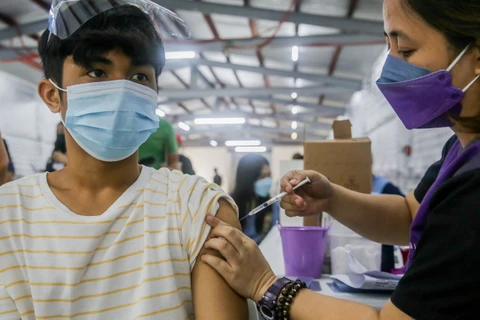 UN allocates 12 mln USD for Rai typhoon response in Philippines (Photo: https://www.daijiworld.com/)
UN allocates 12 mln USD for Rai typhoon response in Philippines (Photo: https://www.daijiworld.com/) Hanoi (VNA) – UN Undersecretary-General for Humanitarian Affairs and Emergency Relief Coordinator Martin Griffiths on December 23 announced a 12-million-USD rapid response allocation from the UN Central Emergency Response Fund to support the response to Typhoon Rai in the Philippines.
According to the UN Office for the Coordination of Humanitarian Affairs, the allocation will help 220,000 victims of the typhoon through interventions in food, security, water and sanitation hygiene, camp management, shelter and logistics, as well as telecommunications in the hardest-hit Caraga region and Region VIII, said the UN Office for the Coordination of Humanitarian Affairs.
Speaking at an online press conference on the same day, UN resident coordinator and humanitarian coordinator in the Philippines Gustavo Gonzalez said the UN would launch a humanitarian needs and priorities plan on December 24, which is expected to raise 6.5 million USD to support victims of Typhoon Rai in the Philippines.
The amount will target 530,000 people in the worst-hit areas, Gonzalez said.
According to Gonzalez, some 3 million people in the Philippines need assistance, including 1 million children.
A total of 631,000 people have been displaced and about 200,000 houses have been damaged, he noted, adding that people are in urgent need of emergency shelter, drinking water and food.
Super Typhoon Rai smashed into the Philippines on December 16 packing wind speeds of 195 kilometres per hour, becoming one of the strongest storms hitting the Southeast Asian nation in recent years.
The storm ravaged many areas in the central and southern regions, including Luzon island - the country's largest and most populous island.
President Rodrigo Duterte on December 21 declared a state of calamity in several regions to speed up relief efforts for victims of Typhoon Rai./.
























